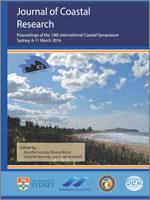Bock, A.; Phillips, M.R., and Woehler, E., 2016. The role of beach and wave characteristics in determining suitable habitat for three resident shorebird species in Tasmania. In: Vila-Concejo, A.; Bruce, E.; Kennedy, D.M., and McCarroll, R.J. (eds.), Proceedings of the 14th International Coastal Symposium (Sydney, Australia). Journal of Coastal Research, Special Issue, No. 75, pp. 358–362. Coconut Creek (Florida), ISSN 0749-0208.
Beaches are connections between marine and terrestrial environments, and as they are highly dynamic, they demand adaptation and flexibility by inhabitant species. Along Tasmania's beaches and coastline, resident shorebirds have acclimatised and become year-around stationary territory holders. This life strategy requires an environment and territory that offers all necessary resources, all year around and for every life stage. Consequently, this study investigated not only the habitat use of three resident shorebird species and related Tasmanian beach types, but moreover assessed the habitat use in relation to the different abiotic characteristics and environmental conditions. This was achieved by combining and merging datasets from four different sources. Results revealed significant differences in the role and importance of beach characteristics and environmental factors among the three species, i.e. surf zone width appeared to be highly significant and significant for Pied Oystercatchers and Hooded Plovers respectively, whilst mean annual wind speed was highly significant for Hooded and Red-capped Plovers, but not Pied Oystercatchers. Other beach attributes such as mean beach width and swash gradient appeared to be significant for Pied Oystercatchers and Red-capped Plovers respectively. Also significance of wave variables differed amongst the three species: mean annual significant wave height for Red-capped Plovers; maximum significant wave height for Hooded Plovers; and mean annual wave period for Pied Oystercatchers. With regards to sea level rise and potential habitat loss, research findings will underpin the development of future beach management strategies, by integrating social, economic and conservation interests.





